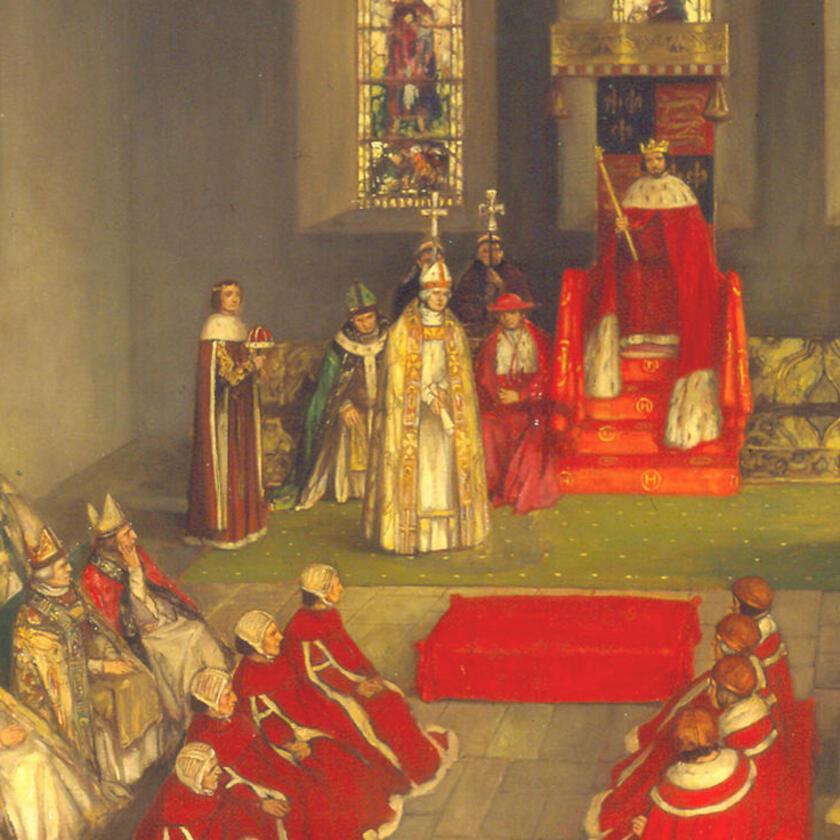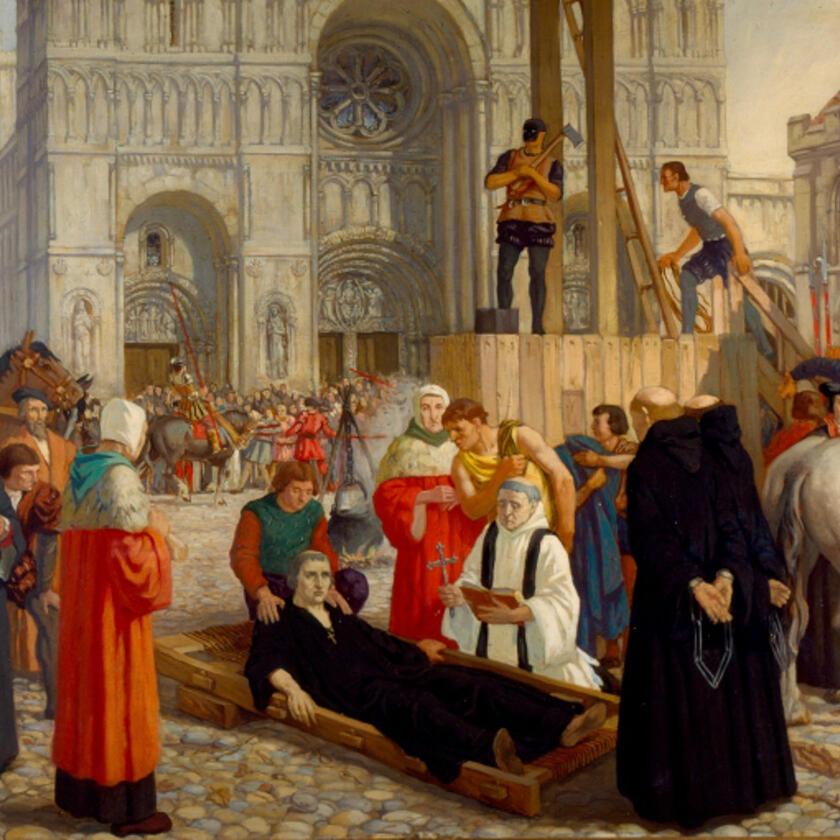The large grey stone memorial cross to King Henry I in the Forbury Gardens shows roughly where the west end of the abbey church once stood. Through the wide wooden doors a visitor would find gigantic columns and arches supporting the roof of the nave (the main body of the church), and colourful wall paintings and carvings of saints and angels decorating almost every available space. The church was vast about 160m long.

An artist's impression of a medieval fair in front of Reading Abbey's west front
Digging Deeper - A pilgrim's visit
Reading Abbey was an important destination for medieval pilgrims. They came to ask for a blessing, give thanks, or ask for a cure. Many were drawn by one of the abbey’s most important relics – the hand of St James.
A pilgrim's first encounter with the abbey was its large and impressive main gateway beside St Laurence's church. The road under the gate led directly to the imposing west face of the abbey church and the Forbury, the large open space between the gate and the church. On the saints days of St Philip (1 May), St James (25 July) and St Laurence (10 August) large fairs were held in the Forbury.
Pilgrims and travellers could stay in the Hospitium just to the north of St Laurence's church for two nights. Their stay was free as long as they went to services at the abbey church. Pilgrims entered the abbey church by the west doors. At each chapel around the church, pilgrims could admire a beautifully decorated altar and images of the saints. They might light a candle or pray before a relic to make a special vow or request. Pilgrims who had their prayers answered made gifts to the abbey – an important source of income.

Reading Abbey pilgrim badge, 1250-1400 (museum object no. 2016.36.1)
Abbey paintings at Reading Museum
Dr. Jamieson Boyd Hurry, a local doctor with a particular interest in Reading Abbey, commissioned ten large oil paintings from 1909. All are artistic impressions of important events in the abbey’s history and aren't always historically accurate but do give an idea of its importance, scale and colour in the medieval period. The series was completed in 1923. All ten paintings are located in public spaces within Reading Museum and the Town Hall. You can view all of them on the Museum's collections online website (search for 'Hurry').
Dr Hurry was particularly generous in his public gifts. He seemed to realize that it is a duty of those possessing wealth to spend much of it for the benefit of the public…
- Dr Allen, 8 March 1930 in Dr Hurry's obituary in the British Medical Journal









